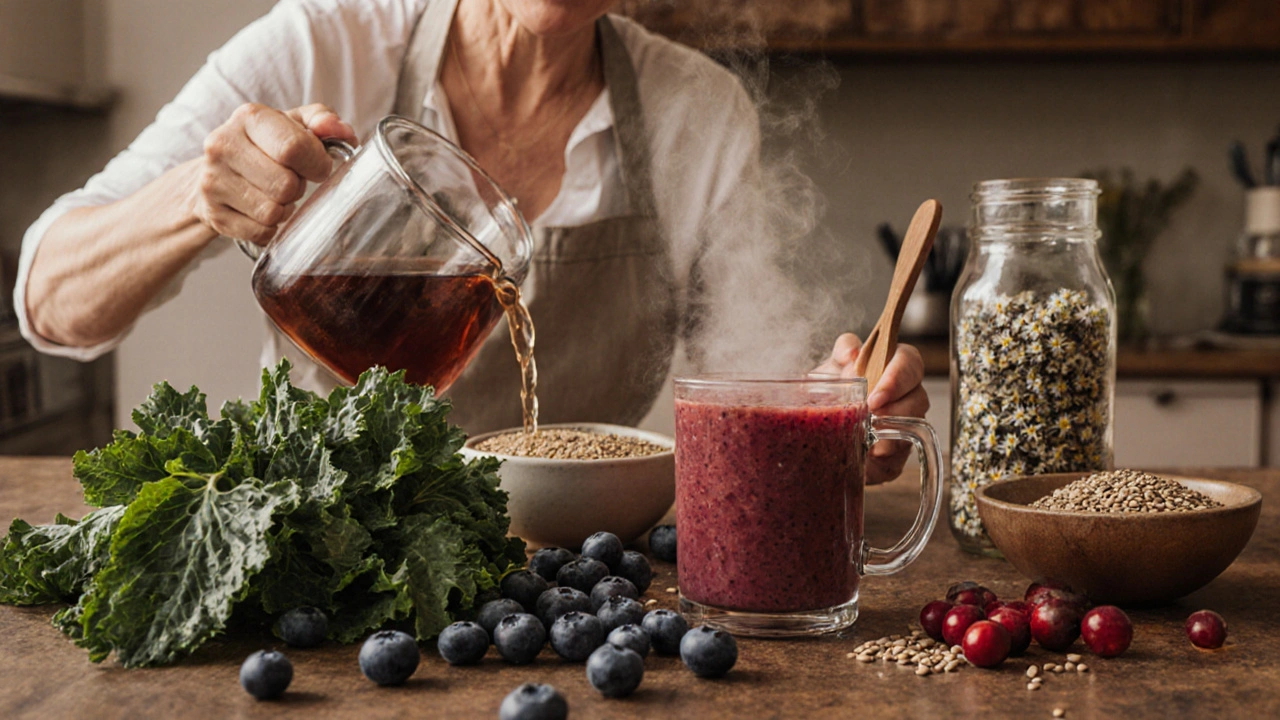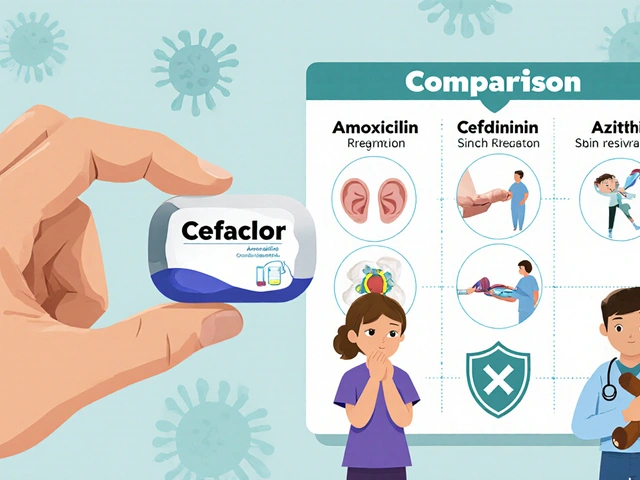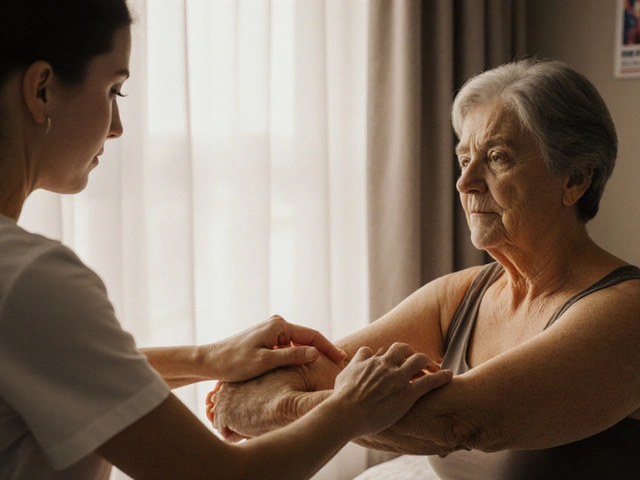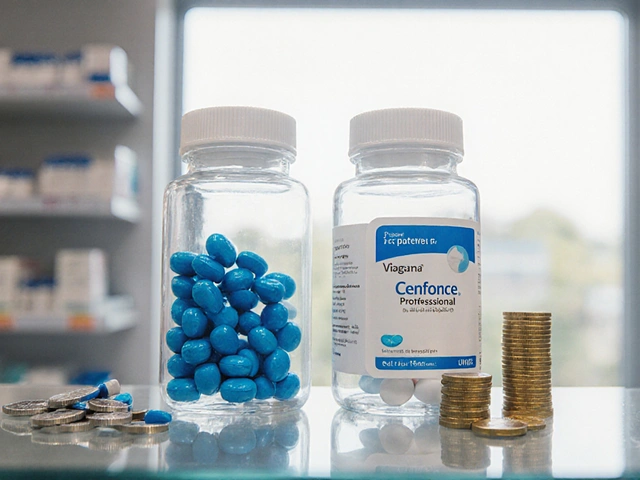Natural Remedies for Urine Leakage is a collection of non‑pharmaceutical approaches designed to reduce or manage urinary incontinence. If you’ve tried pads, meds, or even surgery and still face leaks, you’re probably wondering whether tea, supplements, or simple exercises can actually help. This article breaks down the science, the common myths, and the practical steps you can take right now.
Understanding Urinary Incontinence
Urinary Incontinence is a condition characterized by unwanted loss of urine. It affects roughly 1 in 4 women and 1 in 10 men over age 40, according to recent population surveys. The three main types are:
- Stress incontinence: leakage during coughing, sneezing, or lifting.
- Urgency (or overactive bladder): a sudden, intense urge to void.
- Mixed incontinence: a combination of stress and urgency symptoms.
Each type has distinct triggers, which means a one‑size‑fits‑all remedy rarely works. Knowing your pattern is the first step toward picking the right natural strategy.
Pelvic Floor Muscle Training (PFMT)
Pelvic Floor Muscle Training (often called Kegels) is a targeted exercise regimen that strengthens the muscles supporting the bladder and urethra. Strong pelvic floor muscles can improve closure pressure and reduce leak episodes.
- Identify the correct muscles by stopping urine flow mid‑stream (only for learning, not as a regular practice).
- Contract the muscles for 5seconds, then relax for 5seconds.
- Perform 10-15 repetitions, three times a day.
Clinical trials show a 30‑40% reduction in leak frequency after 12weeks of consistent PFMT. The key is patience-muscle hypertrophy takes time.
Bladder Training
Bladder Training is a behavioral program that gradually extends the interval between bathroom visits. The goal is to retrain the bladder’s sensory pathways.
- Start with a realistic schedule (e.g., every 2hours).
- Increase the interval by 15‑30minutes each week.
- Use distraction techniques-reading, mild walking-to suppress the urgency urge.
When combined with PFMT, bladder training can cut urgency episodes by up to 50% in three months.
Herbal and Nutritional Supplements
Herbal medicine has a long tradition in managing urinary symptoms. Below is a quick look at the most researched options.
| Herb | Evidence Level | Typical Dose | Common Side Effects |
|---|---|---|---|
| Cranberry Extract | Low (mostly urinary‑tract‑infection studies) | 500mg daily | Stomach upset, possible kidney‐stone risk |
| Butterbur (Petasites hybridus) | Moderate (small RCTs show reduced urgency) | 75mg twice daily (PA‑free extract) | Headache, dizziness; avoid if liver disease present |
| Chamomile Tea | Low (anecdotal, anti‑inflammatory properties) | 2-3 cups per day | Rare allergic reactions |
urine leakage natural remedies often focus on herbs like the ones above, but the strength of evidence varies. Cranberry, for instance, is well‑known for preventing bacterial adherence in the urinary tract, yet it doesn’t directly strengthen bladder muscles. Butterbur contains petasin, which may calm detrusor overactivity, making it one of the more promising options for urgency‑type incontinence. Chamomile’s soothing effect is useful for stress‑related leaks, but scientific backing is minimal.
Mineral Supplements: Magnesium and Vitamin D
Magnesium Supplement is a mineral that helps regulate smooth‑muscle function, including the bladder wall. A daily dose of 300‑400mg (magnesium citrate) has been linked to fewer nocturnal leaks in a 2021 pilot study of 60 women.
Vitamin D deficiency correlates with weakened pelvic floor muscles. Ensuring serum levels above 30ng/mL (roughly 800‑1000IU daily) may improve muscle tone, though direct studies on incontinence are still emerging.

Mind‑Body Practices: Yoga, TaiChi, and Acupuncture
Yoga for Pelvic Health is a series of postures that target core stability and pelvic floor engagement. Poses such as Bridge, Child’s Pose with a block, and Squat hold activate the levator ani group. A randomized trial in 2022 showed a 25% reduction in stress leaks after eight weekly yoga sessions.
Acupuncture for Incontinence is a traditional Chinese medicine technique that stimulates specific points believed to influence bladder control. While systematic reviews label the evidence as “promising but low quality,” many patients report subjective improvement after 6-10 sessions.
Both practices share a common theme: they lower overall stress hormones (cortisol) which can exacerbate urgency leaks.
Weight Management and Lifestyle Tweaks
Excess body weight presses on the bladder and pelvic floor. A 5% reduction in BMI often translates to a 10‑15% decrease in leak episodes, according to a large cohort study from 2020. Simple changes-like swapping sugary sodas for water, incorporating a brisk 30‑minute walk, and using a step‑counter to meet 10,000 steps daily-can make a measurable difference.
Other lifestyle tips include:
- Limit caffeine and alcohol (both diuretics).
- Maintain good bowel habits; constipation strains the pelvic floor.
- Wear breathable, cotton underwear to reduce irritation.
Putting It All Together: A Practical 12‑Week Plan
Below is a starter roadmap that blends the most evidence‑backed natural strategies. Adjust based on your specific type of incontinence and any medical advice you’ve received.
- Weeks1‑2: Identify leak patterns, start a bladder‑training log, and begin PFMT (5seconds hold, 10 reps, three times daily).
- Weeks3‑4: Add a 300mg magnesium supplement and a daily cup of chamomile tea; continue PFMT and increase bladder‑training intervals by 15minutes.
- Weeks5‑8: Introduce butterbur (75mg twice daily, PA‑free) if urgency dominates; start a gentle yoga routine focusing on Bridge and Squat poses twice weekly.
- Weeks9‑12: Evaluate progress-if leak frequency drops >30%, maintain the regimen; if not, consider consulting a continence physiotherapist for tailored biofeedback.
Remember, natural remedies complement-not replace-medical care. If you notice worsening symptoms, blood in urine, or pain, seek professional evaluation.
Related Topics You Might Explore Next
While this guide focuses on non‑pharmaceutical options, the broader continence landscape includes:
- Prescription anticholinergics and beta‑3 agonists.
- Surgical options such as sling procedures and bladder Botox.
- Advanced pelvic‑floor biofeedback devices.
- Specialist continence clinics and support groups.
Understanding how natural methods fit within the larger treatment algorithm helps you make informed, balanced decisions.
Frequently Asked Questions
Are natural remedies effective for stress urinary incontinence?
Yes-especially pelvic floor muscle training and targeted yoga poses. Studies show a 30‑40% leak reduction after 12weeks of consistent PFMT. Adding magnesium or butterbur can further help if urgency is also present.
How long does it take to see results from pelvic floor exercises?
Most people notice improvement after 6‑8weeks of daily training. Full muscle hypertrophy may require 3‑4months, so patience and proper technique are crucial.
Can cranberry juice really help with bladder control?
Cranberry’s main benefit is preventing bacterial adhesion in the urinary tract, which can indirectly reduce irritation‑related urgency. It does not strengthen bladder muscles, so it works best as a preventive measure rather than a direct remedy for leaks.
Are there any risks with using butterbur for incontinence?
Butterbur can be safe when you use a PA‑free extract (the pyrrolizidine alkaloids are removed). However, high doses may cause headache, dizziness, or liver strain. Always choose a reputable brand and discuss with your doctor if you have liver disease.
Should I combine multiple natural remedies?
Combining strategies often yields the best results-e.g., PFMT + bladder training + magnesium. Stacking too many herbs can increase side‑effect risk, so start with one supplement, monitor tolerance, then add another if needed.








